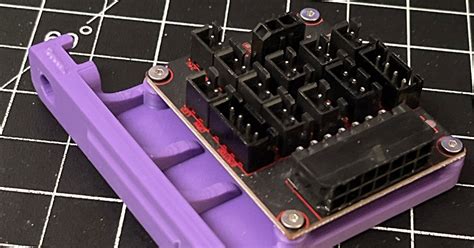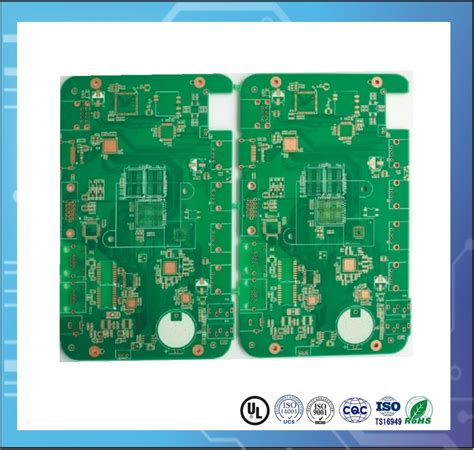Mastering Control Board Assembly: A Guide to Precision and Efficiency
Key Takeaways
Mastering pcb assembly is not only about understanding the components involved but also recognizing their significance in achieving a successful project outcome. The control board assembly process is intricate and demands attention to detail, highlighting the importance of learning various techniques that contribute to both precision and efficiency. Utilizing the right tools tailored for pcba can significantly improve your workflow. Familiarizing yourself with the critical steps involved in the control board assembly allows you to troubleshoot common challenges effectively, ensuring that your final product meets quality standards. Furthermore, keeping abreast of emerging trends and technologies in the field will empower you to incorporate innovative practices into your projects. Ultimately, staying informed about best practices and maintaining quality assurance procedures are essential for optimal performance in any control board assembly endeavor.
Understanding Control Board Assembly: Fundamentals and Importance
Control board assembly, often referred to as pcb assembly or pcba, is a critical process that integrates various electronic components into a unified circuit board. Understanding this process is essential for professionals and enthusiasts alike, as it plays a pivotal role in the functionality and reliability of electronic devices. The importance of mastering control board assembly cannot be overstated; it not only ensures that components are correctly installed but also impacts the overall performance and lifespan of the final product.
In this field, precision is paramount. Each component must be placed with accuracy to prevent failure during operation. A misalignment, no matter how slight, can lead to malfunction or inefficiency. Therefore, familiarity with the fundamentals of pcba, including design schematics and specifications, is crucial. Additionally, grasping the significance of the assembly process helps in recognizing its influence on product quality and customer satisfaction.
To illustrate these concepts further, here’s a brief comparison highlighting key aspects of traditional methods versus modern techniques in control board assembly:
| Aspect | Traditional Methods | Modern Techniques |
|---|---|---|
| Precision | Manual placement | Automated pick-and-place systems |
| Speed | Slower throughput | Faster production rates |
| Error rates | Higher occurrence | Significantly reduced |
| Flexibility | Low adaptability | High customization potential |
This table underscores how advances in technology have revolutionized control board assembly, emphasizing the importance of continued education and skill enhancement in this essential craft. By digging deeper into these fundamentals, practitioners can unlock new levels of efficiency and effectiveness in their projects.
Essential Tools and Equipment for Control Board Assembly
To successfully navigate the realm of control board assembly, also known as pcb assembly or pcba, it is imperative to equip oneself with the right tools and equipment. The assembly process demands a variety of precision instruments to enhance efficiency and ensure high-quality results. Key tools include a soldering iron, which is essential for joining electronic components, as well as a multimeter to test voltage, current, and resistance, ensuring that every connection is robust.
Moreover, having a proper workbench with adequate lighting can greatly improve visibility while assembling delicate boards. Employing organizational tools such as component bins or trays will aid in managing various parts efficiently during the assembly process. For more intricate tasks, specialized equipment like pick-and-place machines can automate component placement, elevating speed and accuracy.
“Investing in the right tools can save time and reduce errors—crucial factors in mastering pcb assembly.”
In addition to manual tools, software solutions are becoming increasingly essential in the design phase. CAD (Computer-Aided Design) software can significantly streamline the layout process by allowing for precise measurements and proper spacing between components.
Ultimately, having an organized toolkit filled with essential instruments not only enhances your skill level but also contributes to achieving optimal performance in every pcba project. By ensuring that you have these tools at your disposal, you are setting a solid foundation for mastering control board assembly through precision and efficiency.
Step-by-Step Process of Control Board Assembly
The step-by-step process of control board assembly (also known as PCB assembly or PCBA) is critical for ensuring the overall success and functionality of electronic devices. At the outset, it’s essential to begin with careful planning, which involves reviewing the schematic design and generating a comprehensive Bill of Materials (BOM). This ensures that all components, from resistors to integrated circuits, are accounted for before assembly begins.
Next, the assembly process typically starts with preparing the printed circuit board (PCB). This includes cleaning the surfaces to enhance adhesion for components during soldering. Once the PCB is prepped, components are placed on the board according to the layout in an organized manner, often using automated pick and place machines for precision. After placement, soldering techniques such as wave or reflow soldering are employed to secure components firmly in place.
Once soldered, it’s crucial to conduct a thorough inspection of the PCBA to identify any potential issues such as cold solder joints or misplaced components. Utilizing technologies like Automated Optical Inspection (AOI) can significantly enhance this quality assurance step. Finally, functional testing is performed to guarantee that all electronic functions operate seamlessly.
Integrating these meticulous steps into your control board assembly practice can significantly elevate both precision and efficiency in your projects. By mastering this process, you not only enhance your technical skills but also contribute positively towards achieving optimal performance in every electronic endeavor you undertake.
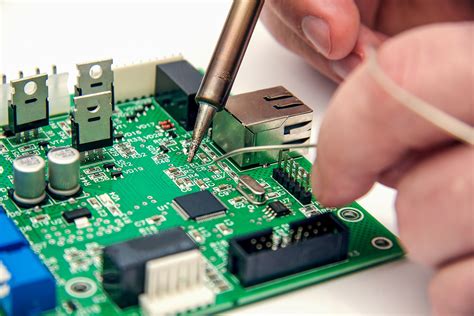
Techniques for Achieving Precision in Control Board Assembly
Achieving precision in control board assembly is paramount for ensuring the functionality and reliability of electronic devices. One fundamental technique is to maintain consistent soldering practices throughout the pcb assembly process. This involves using the correct amount of solder and ensuring that the connections between components are both mechanically strong and electrically conductive. It’s also essential to pay attention to temperature control during soldering; excessive heat can damage sensitive components, while insufficient heat can lead to poor connections.
Another vital technique is the use of automated inspection systems that can detect defects that might be missed by the human eye. These systems often employ advanced imaging technology to assess the quality of pcba in real-time, allowing for immediate corrections and minimizing waste. Additionally, following a standard operating procedure (SOP) can greatly enhance consistency and efficiency. Each team member should be well-trained in their specific roles within the control board assembly to reduce errors.
Furthermore, implementing a cleanroom environment helps minimize contamination from dust particles that could affect solder joints or other critical areas of a printed circuit board (PCB). To support this environment, personnel should wear appropriate protective gear, such as gloves and masks, when handling components.
Lastly, regular maintenance of tools and equipment cannot be underestimated; precise calibration ensures that every device used in the process operates within its optimal parameters. By employing these techniques meticulously, professionals can elevate their skills in pcba, resulting in a final product that meets high standards of quality and reliability.
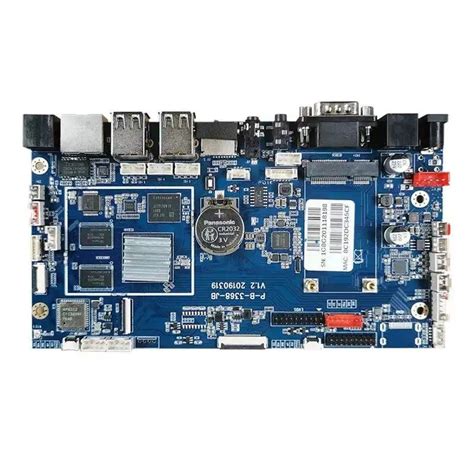
Common Challenges in Control Board Assembly and Solutions
In the realm of pcb assembly, various challenges frequently arise that can hinder the efficiency and precision of the assembly process. One common challenge is misalignment of components, which can lead to improper functioning of the final product. To counter this, utilizing accurate placement tools such as pick-and-place machines can significantly enhance alignment accuracy. Another issue faced in pcba is the potential for soldering defects, which may stem from inconsistent temperature control during soldering processes. Implementing automated soldering systems with precise thermal profiles helps mitigate these risks by ensuring uniform heat distribution. Additionally, managing component orientation is essential; components placed incorrectly can cause circuit failures. A focused approach involving thorough pre-assembly checks and using automated inspection techniques can help maintain proper orientation throughout the assembly process. Lastly, environmental factors such as dust and humidity can adversely affect adhesion and performance of assembled boards. Regular maintenance of cleanroom environments and employing encapsulation techniques have proved effective in safeguarding the integrity of sensitive components. By addressing these challenges with targeted strategies, one can significantly improve outcomes in control board assembly processes, ultimately leading to better product reliability and customer satisfaction.
Best Practices for Efficiency in Control Board Assembly
When it comes to pcb assembly, implementing best practices is crucial to enhance efficiency and maintain high-quality standards. One of the key strategies is to organize the workspace effectively. A well-structured environment minimizes clutter and allows for easy access to essential tools and components. Using pcba layouts that prioritize component placement can significantly reduce assembly time, as it streamlines the workflow. Moreover, leveraging automated systems for repetitive tasks can free up skilled technicians to focus on more complex activities that require critical thinking and adaptability.
In addition, regular training sessions ensure that all team members are proficient in the latest assembly techniques and technologies, thereby improving overall performance. Quality control measures should be integrated at each step of the pcb assembly process, allowing for early detection of potential issues and reducing rework or waste. Emphasizing teamwork and clear communication among personnel contributes greatly to a smooth operation, promoting efficiency across the board. Ultimately, adopting these best practices not only enhances productivity but also maximizes the reliability of every pcba project undertaken.
Quality Assurance: Ensuring Optimal Performance in Your Projects
In the realm of pcb assembly, ensuring quality is paramount for achieving optimal performance in your projects. Quality assurance encompasses a range of practices designed to validate the integrity and functionality of the pcba components throughout the assembly process. To effectively monitor quality, it is critical to implement stringent testing procedures, including visual inspections and functional tests that identify faults before they escalate into larger issues. Employing automated inspection technologies, such as X-ray and AOI (Automated Optical Inspection), can significantly enhance accuracy, revealing potential defects that may not be visible to the naked eye. Moreover, establishing a robust feedback loop for ongoing improvement involves documenting issues and solutions systematically; this iterative process fosters an environment of continuous enhancement. By rigorously adhering to quality assurance protocols, technicians can mitigate risks associated with poor solder joints or misalignments, ultimately ensuring that every pcb assembly meets high standards of reliability and functionality. Emphasizing quality not only saves time and costs in the long run but also instills confidence in clients regarding the performance and durability of their projects.
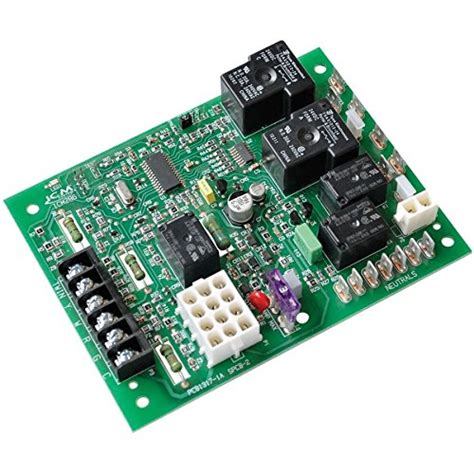
Future Trends in Control Board Assembly: Innovations and Technologies
As the field of pcb assembly continues to evolve, innovations and emerging technologies are reshaping how we approach pcba practices. One of the significant trends is the integration of automation in the assembly process. This has led to increased efficiency and precision, reducing human error and the potential for defects. Furthermore, advancements in materials, such as flexible PCBs and high-frequency substrates, are enabling designers to create more compact and versatile devices that meet modern electronic demands. Another notable trend is the shift towards industry 4.0, where connectivity and data analytics play a crucial role in monitoring and optimizing the control board assembly process. Smart machinery now communicates performance metrics in real-time, allowing for immediate adjustments that enhance productivity. In addition to these technologies, sustainable practices are gaining traction, with a focus on minimizing waste during pcba processes and ensuring environmentally friendly materials are utilized. Embracing these innovations not only boosts overall efficiency but also positions manufacturers competitively in today’s fast-paced market landscape.
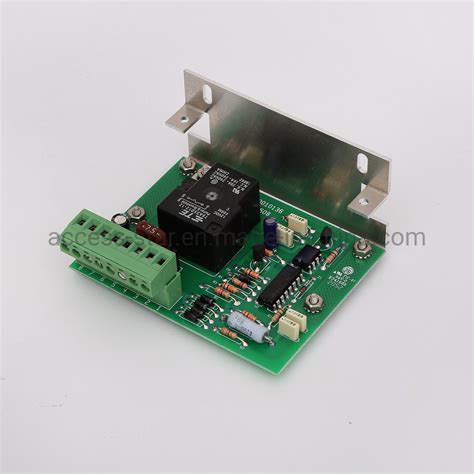
Conclusion
In summary, mastering control board assembly—often referred to as pcb assembly or pcba—is crucial for achieving high-quality electronic products. As we’ve explored throughout this guide, the process involves a nuanced understanding of various components, tools, and techniques that are essential for ensuring precision and efficiency. The challenges that arise during pcb assembly can often be mitigated by adopting proven best practices, which in turn enhance the overall performance of your projects. As technology continues to evolve, staying informed about future trends and innovations in control board assembly will be indispensable for professionals eager to maintain an edge in the industry. Overall, the pursuit of excellence in this field requires dedication to continuous learning and a commitment to quality assurance, ultimately leading to successful outcomes in every endeavor within the realm of pcba.
FAQs
What is control board assembly?
Control board assembly, often referred to as pcb assembly or pcba, involves the process of assembling various electronic components onto a printed circuit board (PCB). This essential task ensures that the board functions correctly and meets the specified requirements for electronic devices.
Why is precision important in control board assembly?
Precision in pcb assembly is crucial as it directly impacts the performance and reliability of the final product. Any misalignment or incorrect placement of components can lead to functional failures, which underscores the necessity for skilled techniques and tools that enhance accuracy throughout the process.
What tools are typically used in PCB assembly?
Essential tools for control board assembly include soldering irons, tweezers, multimeters, and specialized machines for surface mount technology. Each tool plays a significant role in achieving optimal results in pcba, aiding in tasks from component placement to testing.
What common challenges might arise during PCBA?
Common challenges in pcb assembly include component misalignment, soldering defects, and thermal issues. These challenges can be addressed through proper training, using quality materials, and implementing thorough quality assurance processes.
How can efficiency be increased during control board assembly?
To enhance efficiency in pcba, practitioners should adopt lean manufacturing principles, utilize automated equipment where feasible, streamline workflows, and continuously train staff on best practices. This focus on efficiency ultimately contributes to quicker turnarounds and reduced production costs.
For more resources and guidance on mastering control board assembly techniques, please click here: Andwin PCB Assembly.






